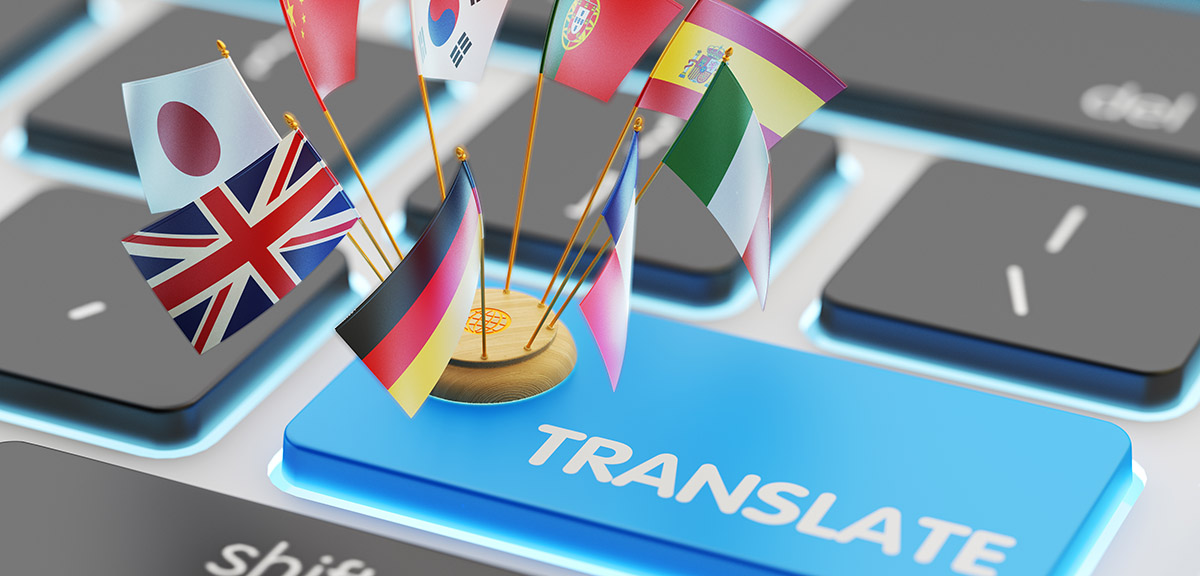
Introduction
In today’s interconnected world, the demand for translation services is higher than ever before. As businesses expand globally and individuals seek to communicate across linguistic barriers, the translation industry presents a lucrative opportunity for aspiring entrepreneurs. If you have a passion for languages and a knack for communication, starting your own translation business could be the perfect venture for you. In this comprehensive guide, we’ll walk you through the essential steps to launch and grow a successful translation business from the ground up.
Step 1: Define Your Niche – Specialization and Expertise
When defining your niche, consider the languages you’re proficient in and any specialized knowledge you possess. It’s essential to identify your unique selling proposition (USP) that sets you apart from competitors. For example, if you’re fluent in rare or less commonly spoken languages, you can target clients seeking translations in those languages. Additionally, if you have experience in specific industries such as legal, medical, or technical fields, you can leverage that expertise to attract clients in those sectors.
Specialization not only allows you to target specific clients more effectively but also enables you to command higher rates for your services. Clients are often willing to pay a premium for translators who possess specialized knowledge and can deliver accurate and culturally relevant translations within their industry.
Step 2: Develop Your Skills – Continuous Learning and Improvement
In the translation industry, continuous learning and skill development are essential for staying competitive and delivering high-quality translations. Invest time and resources in improving your language proficiency, mastering translation techniques, and staying updated on industry trends and best practices.
Consider enrolling in language courses, attending translation workshops and conferences, and joining professional associations such as the American Translators Association (ATA) or the Chartered Institute of Linguists (CIOL). These organizations offer valuable resources, networking opportunities, and professional development programs to help translators enhance their skills and advance their careers.
Additionally, familiarize yourself with translation tools and software that can streamline your workflow and improve efficiency. CAT tools such as SDL Trados, MemoQ, and Wordfast are widely used in the industry to manage terminology, ensure consistency, and increase productivity. By mastering these tools, you can deliver translations more efficiently while maintaining high standards of quality.
Step 3: Create a Business Plan – Setting Goals and Strategies
A well-crafted business plan serves as a roadmap for your translation business, outlining your goals, target market, pricing strategy, marketing plan, and financial projections. Start by defining your business objectives, such as the number of clients you aim to acquire, your revenue targets, and your growth milestones.
Next, conduct market research to identify your target market and assess the demand for translation services in your niche. Analyze your competitors to understand their strengths, weaknesses, and pricing strategies, and identify opportunities to differentiate yourself and carve out a competitive advantage.
Based on your research, develop a marketing strategy that outlines how you’ll reach and attract clients, whether through online channels such as your website, social media, and email marketing, or offline tactics such as networking events, conferences, and direct mail campaigns. Determine your pricing strategy, taking into account factors such as your experience, expertise, and the complexity of the project, as well as market rates and client expectations.
Finally, create financial projections that estimate your startup costs, ongoing expenses, and potential revenue streams. Consider factors such as equipment and software costs, marketing expenses, professional fees, and taxes, and determine how much revenue you need to generate to achieve profitability and sustain your business in the long term.
Step 4: Choose Your Business Structure – Legal Considerations
Choosing the right legal structure for your translation business is an important decision that will impact your liability, taxes, and regulatory requirements. The most common business structures for small translation businesses are sole proprietorships, partnerships, limited liability companies (LLCs), and corporations.
A sole proprietorship is the simplest and most straightforward business structure, where you are the sole owner and operator of the business. While this structure offers simplicity and flexibility, it also exposes you to unlimited personal liability for business debts and obligations.
A partnership involves two or more individuals sharing ownership and management responsibilities for the business. Partnerships can be general partnerships, where all partners share equally in profits and liabilities, or limited partnerships, where one or more partners have limited liability.

An LLC is a hybrid business structure that combines the limited liability protection of a corporation with the pass-through taxation of a partnership or sole proprietorship. LLCs offer flexibility in management and taxation, as well as protection of personal assets from business debts and lawsuits.
A corporation is a separate legal entity that is owned by shareholders and managed by a board of directors. Corporations offer the highest level of liability protection for owners, but they also involve more complex legal and regulatory requirements, as well as double taxation of profits.
Before choosing a business structure, consult with a legal advisor or accountant to assess the advantages and disadvantages of each option and determine the best fit for your specific circumstances.
Step 5: Register Your Business – Legal Requirements
Once you’ve chosen a business structure, you’ll need to register your translation business with the appropriate government authorities. The specific requirements for registering a business vary depending on your location and the type of business structure you’ve chosen.
At a minimum, you’ll need to register your business name with the appropriate state or local government agency and obtain any necessary business licenses or permits. In some cases, you may also need to register for state and local taxes, obtain an employer identification number (EIN) from the IRS, and comply with any industry-specific regulations or licensing requirements.
Consult with a legal advisor or accountant to ensure that you comply with all legal and regulatory requirements for starting and operating a translation business in your area.
Step 6: Set Up Your Workspace – Creating a Productive Environment
Creating a dedicated workspace for your translation business is essential for maximizing productivity and efficiency. Choose a quiet, well-lit area where you can work without distractions and set up your workstation with all the necessary tools and resources.
Equip your workspace with a reliable computer, high-speed internet connection, printer, scanner, and any other equipment you need to perform your translation work. Invest in ergonomic furniture and accessories to ensure comfort and minimize strain during long hours of work.
Organize your workspace in a way that facilitates efficient workflow and keeps you focused on your tasks. Use file storage and organization systems to keep your documents and reference materials organized and easily accessible, and establish routines and workflows to streamline your translation process.
Step 7: Invest in Professional Tools – Essential Equipment and Software
Investing in professional translation tools and software is essential for delivering high-quality translations to your clients. Consider investing in CAT tools (Computer-Assisted Translation) such as SDL Trados, MemoQ, or Wordfast, which can help you manage terminology, maintain consistency, and increase productivity.
CAT tools are equipped with features such as translation memory, glossary management, and quality assurance checks that streamline the translation process and ensure accuracy and consistency across projects. By mastering these tools, you can improve your efficiency and deliver translations more quickly and cost-effectively than traditional methods.
In addition to CAT tools, invest in reference materials, dictionaries, and style guides to support your translation work. Build a library of resources that you can consult for terminology, industry-specific terminology, and linguistic conventions, and stay updated on the latest developments in your field.
Step 8: Build Your Portfolio – Showcasing Your Work
Building a strong portfolio of work is essential for attracting clients and demonstrating your expertise as a translator. Start by compiling samples of your previous translation work, including projects you’ve completed for clients, as well as any personal or volunteer translations you’ve done.
Select samples that showcase your skills and expertise in your chosen niche, and organize them in a professional portfolio that you can share with potential clients. Highlight your language proficiency, attention to detail, and ability to convey complex ideas accurately and effectively in translation.
In addition to written translations, consider including multimedia samples such as audio or video translations, website localization projects, or transcreation work that demonstrates your ability to adapt content for different cultural contexts.
As you complete projects for clients, ask for permission to include them in your portfolio and request testimonials or endorsements that you can use to showcase your work. Building a portfolio of satisfied clients and successful projects is essential for building credibility and attracting new business.
Step 9: Market Your Services – Reaching Your Target Audience
Effective marketing is essential for attracting clients and growing your translation business. Develop a marketing strategy that targets your ideal clients and showcases your unique value proposition as a translator.
Create a professional website that showcases your services, portfolio, and contact information, and optimize it for search engines to increase your visibility online. Use social media platforms such as LinkedIn, Twitter, and Facebook to connect with potential clients, share valuable content related to translation and language services, and engage with industry professionals and prospective clients.
In addition to online marketing tactics, consider offline strategies such as networking events, conferences, and industry associations to expand your reach and establish your credibility in your niche. Join professional associations such as the American Translators Association (ATA) or the Chartered Institute of Linguists (CIOL) to connect with other translators, access professional development resources, and stay updated on industry news and trends.
Word-of-mouth referrals and recommendations are also powerful marketing tools in the translation industry, so focus on delivering exceptional service to your clients and building lasting relationships that will generate repeat business and referrals over time.
Step 10: Provide Excellent Customer Service – Building Relationships

Providing excellent customer service is essential for building relationships with your clients and earning their trust and loyalty. Communicate promptly and professionally, respond to inquiries and requests in a timely manner, and be proactive in addressing any concerns or issues that arise during the translation process.
Deliver high-quality translations that meet or exceed your clients’ expectations, and be receptive to feedback and suggestions for improvement. By demonstrating your commitment to quality and customer satisfaction, you’ll build a reputation as a reliable and trustworthy translator that clients can rely on for their translation needs.
Maintain open lines of communication with your clients throughout the translation process, keeping them informed of progress, milestones, and any potential delays or challenges that may arise. By keeping clients informed and involved in the process, you’ll build trust and confidence in your abilities and ensure a positive experience that will keep them coming back for future projects.
Follow up with clients after the completion of a project to ensure their satisfaction and address any additional needs or questions they may have. By providing exceptional customer service and building strong relationships with your clients, you’ll establish yourself as a trusted partner and resource for their translation needs, setting the stage for long-term success and growth for your translation business.
Conclusion
Starting a translation business requires careful planning, dedication, and a passion for languages and communication. By following the steps outlined in this guide and staying focused on your goals, you can launch and grow a successful translation business that meets the needs of clients around the world. With perseverance, hard work, and a commitment to excellence, the sky’s the limit for your translation business venture.
